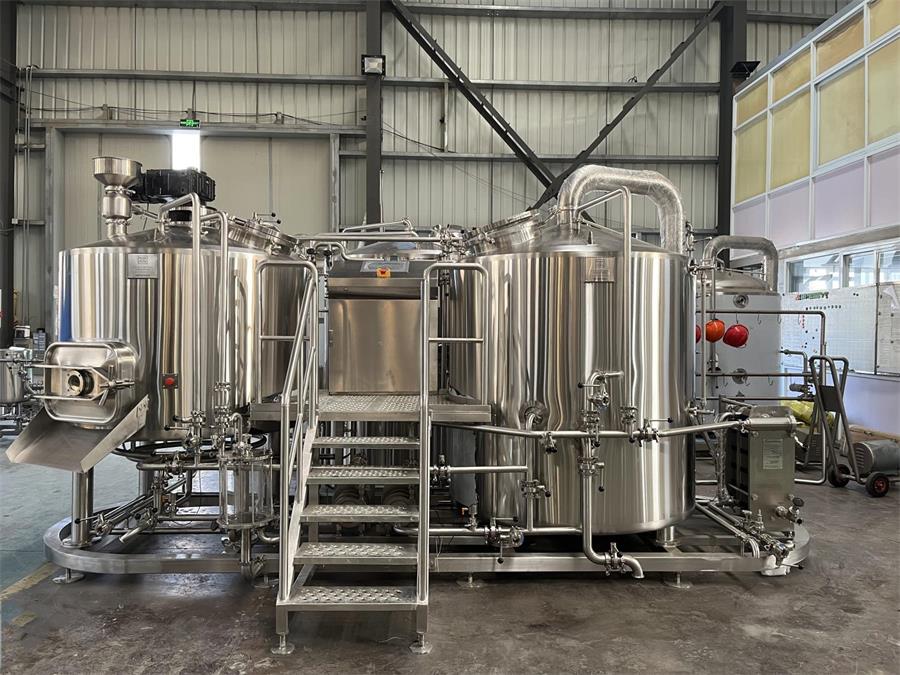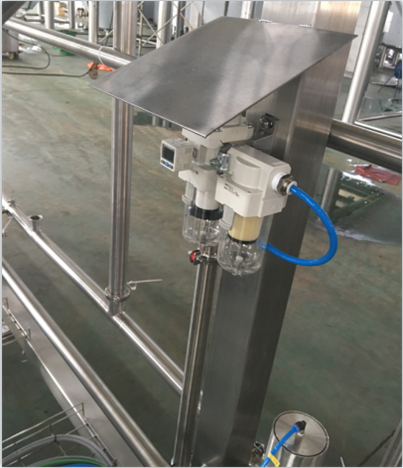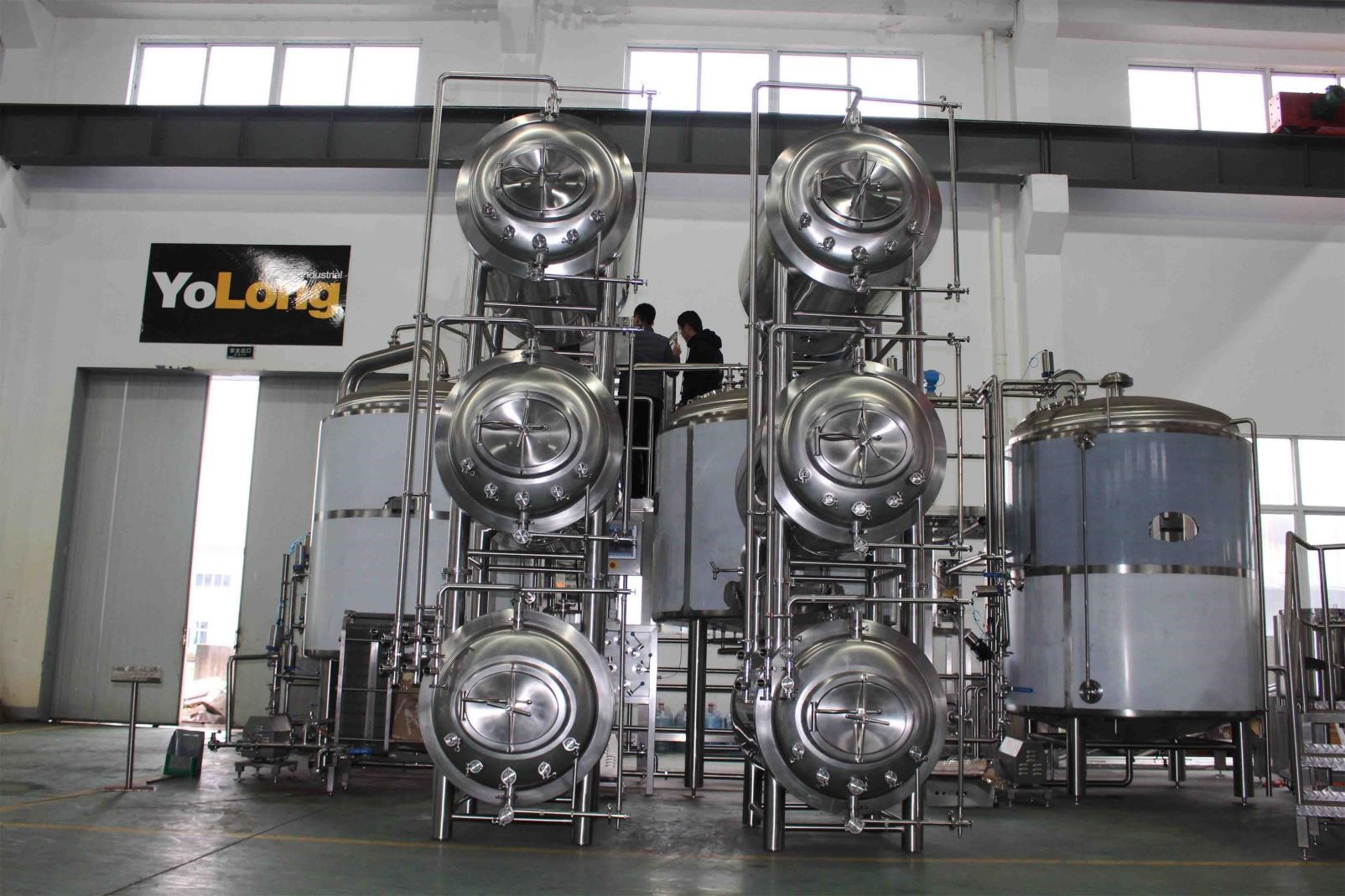10 Advantages of Stainless Steel Brewing Equipment
Introduction
Brewing beer is an art form that requires precision, dedication, and the right equipment. Among the various materials used for brewing, stainless steel has emerged as the go-to choice for both professional and homebrewers. In this comprehensive guide, we will explore the world of stainless steel brewing equipment and why it has become the preferred option for beer enthusiasts.
What is Stainless Steel Brewing Equipment?
Before delving into the benefits and features of stainless steel brewing equipment, let’s understand what it actually is. Stainless steel brewing equipment refers to a range of vessels, tools, and accessories used in the beer-making process, all constructed from high-quality stainless steel. This material is an alloy of iron, carbon, and other elements that provide remarkable qualities ideal for brewing.

Advantages of Stainless Steel Brewing Equipment
Durability and Longevity
One of the primary reasons brewers favor stainless steel equipment is its exceptional durability. Stainless steel can withstand harsh brewing conditions, resist impact, and is less susceptible to denting or warping compared to other materials. This longevity ensures that your brewing equipment will serve you well for years to come.
Corrosion Resistance
Brewing involves exposure to water, acids, and other corrosive substances, making corrosion resistance a crucial factor. Stainless steel’s unique composition provides excellent corrosion resistance, safeguarding the integrity of your equipment and the quality of your brew.
Easy to Clean and Maintain
Maintaining a sterile brewing environment is essential to producing high-quality beer. Stainless steel’s smooth surface makes it easy to clean, preventing bacterial buildup. Additionally, it is non-porous, ensuring that no flavors or residues from previous brews linger.
Retains Purity of Ingredients
Stainless steel is inert and does not react with beer’s ingredients, preserving the flavor and purity of the final product. Brewers can fully showcase the nuances of their chosen hops, malts, and yeast without any interference from the equipment.
Types of Stainless Steel Brewing Equipment
There are various types of stainless steel brewing equipment, each serving a specific purpose in the brewing process:
Stainless Steel Brew Kettles
Brew kettles are where the magic begins. These vessels are used to heat and boil the wort, the liquid extracted from the mashing process, and hops.
Fermenters and Fermentation Tanks
Fermenters are containers where the yeast interacts with the wort, turning sugars into alcohol and carbon dioxide. Conical fermenters, in particular, have gained popularity for their ease of use and efficient yeast collection.
Wort Chillers
After boiling, the wort needs to be cooled rapidly to a temperature suitable for yeast fermentation. Wort chillers, typically made of stainless steel, accomplish this task effectively.
Brew Pumps
Brew pumps are used to transfer liquids between brewing vessels. Stainless steel pumps offer hygienic and reliable liquid transfer.
Mash Tuns and Lauter Tuns
Mash tuns and lauter tuns are essential components for all-grain brewing. Stainless steel options provide precise temperature control and efficient lautering.
Stainless Steel Brewing Hoses
Stainless steel hoses are used for transferring liquids, and they offer durability and flexibility, ensuring a smooth brewing process.

Considerations for Choosing Stainless Steel Brewing Equipment
When selecting stainless steel brewing equipment for your setup, several factors should be taken into account:
Size and Capacity
Consider the batch size you want to produce and choose equipment that matches your desired output. Larger vessels may be required for commercial operations, while homebrewers might opt for more compact options.
Conical vs. Cylindrical Fermenters
Both conical and cylindrical fermenters have their advantages. Conical fermenters are excellent for easy yeast harvesting and removal, while cylindrical fermenters often come at a more budget-friendly price.
Cooling and Insulation
Efficient cooling is crucial for controlling fermentation temperatures. Insulated stainless steel fermenters help maintain stable temperatures and prevent temperature fluctuations.
Additional Features and Accessories
Different manufacturers offer various add-ons and accessories for their brewing equipment. Consider features like integrated temperature controllers, thermowells, and pressure gauges to enhance your brewing experience.
The Brewing Process with Stainless Steel Equipment
Mashing
The mashing process involves soaking crushed grains in hot water to convert starches into fermentable sugars. Stainless steel mash tuns provide precise temperature control and insulation for this crucial step.
Boiling
Once the wort is collected, it needs to be boiled in a stainless steel brew kettle. Boiling sterilizes the wort and allows for the addition of hops, which impart bitterness and aroma to the beer.
Fermentation
Fermentation occurs in stainless steel fermenters, where yeast converts sugars into alcohol and carbon dioxide. This stage is critical for determining the beer’s flavor profile.
Conditioning and Packaging
After fermentation, the beer undergoes a conditioning period to mature and develop its taste. Finally, the beer is packaged, ready to be enjoyed by eager beer enthusiasts.

Cleaning and Maintenance of Stainless Steel Brewing Equipment
Cleaning Procedures
Regular cleaning is essential to prevent contamination and off-flavors in your beer. Proper cleaning procedures, using non-abrasive cleaners, ensure your stainless steel equipment remains spotless.
Maintenance Tips
Maintaining stainless steel brewing equipment involves inspecting for any wear, addressing small issues promptly, and lubricating moving parts to extend their lifespan.
Popular Brands of Stainless Steel Brewing Equipment
Several reputable brands specialize in crafting high-quality stainless steel brewing equipment. We explore some of the most popular choices and their unique features.
DIY Stainless Steel Brewing Equipment
For the more adventurous brewers, building your own stainless steel equipment can be a rewarding experience. We provide step-by-step guides for creating a stainless steel brew kettle and converting a keg into a fermenter.
Sustainability and Stainless Steel Brewing Equipment
Recycling and Reusing Stainless Steel
Stainless steel is an environmentally friendly material as it is fully recyclable, reducing waste and environmental impact.
Energy Efficiency
Stainless steel’s ability to distribute heat evenly and retain temperature contributes to energy-efficient brewing practices.

Conclusion
In conclusion, stainless steel brewing equipment has become the gold standard for brewers due to its exceptional durability, corrosion resistance, and ease of maintenance. Whether you’re a homebrewing hobbyist or a commercial brewer, investing in high-quality stainless steel equipment will undoubtedly elevate your brewing experience and produce top-notch beer.
FAQs
Q1. Is stainless steel brewing equipment suitable for homebrewers?
Yes, stainless steel brewing equipment is ideal for homebrewers due to its durability, ease of cleaning, and ability to retain the purity of ingredients.
Q2. Can I ferment directly in a stainless steel brew kettle?
While some brewers may use a brew kettle for fermentation in a pinch, it is not recommended as fermenters provide better temperature control and yeast management.
Q3. How do I maintain the shine of my stainless steel brewing equipment?
To maintain the shine, clean your equipment regularly using mild detergents or specialized stainless steel cleaners.
Q4. Are there any health risks associated with stainless steel brewing equipment?
No, stainless steel is a safe material for brewing equipment and does not pose any health risks to brewers or consumers.
Q5. Can I use stainless steel brewing equipment for other beverages like cider or mead?
Yes, stainless steel brewing equipment is versatile and can be used for various beverages, including cider and mead.
Share this entry
Interested in learning more about Brewing Systems including additional details and pricing information? Please use the form below to contact us!
YOLONG BREWERY EQUIPMENT FAQS
- Commercial Brewery / Craft Brewery / Microbrewery / Nanobrewery
- What is The Difference Between Craft Beer and Industrial Beer?
- The Bespoke Differences In Custom Brewing Systems
- Everything You Need to Know About Kettle Souring
- How to Choose Brewing Equipment for Your business?
- How To Choose The-Best Partner To Build Your Commercial Microbrewing System?
- Two Detection Sensors That You Need To Use In Your Brewhouse System
- Remote Control Applications in Brewing Equipment/How does it work?
- How To Clean Your Brand New Brewery Tanks?

